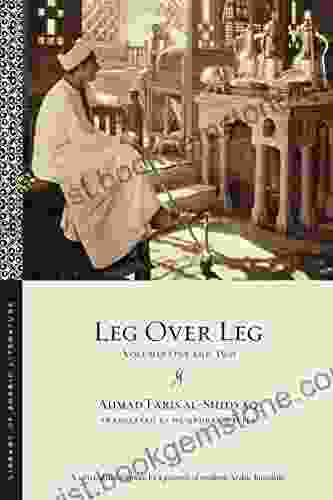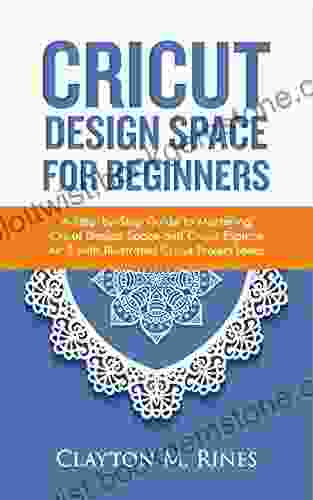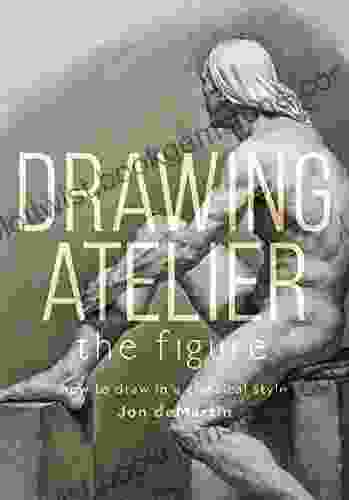A Comprehensive Guide to Mastering Classical Drawing Techniques

Classical drawing is a highly refined and technical style of drawing that has been used by artists for centuries to create realistic and lifelike images. It is based on the principles of perspective, proportion, and anatomy, and requires a great deal of skill and practice to master.
4.8 out of 5
| Language | : | English |
| File size | : | 90013 KB |
| Text-to-Speech | : | Enabled |
| Screen Reader | : | Supported |
| Enhanced typesetting | : | Enabled |
| Print length | : | 178 pages |
If you are interested in learning how to draw in classical style, there are a number of resources available to help you get started. This guide will provide you with a comprehensive overview of the essential techniques and principles of classical drawing, as well as some tips and advice on how to practice and improve your skills.
The Essential Techniques of Classical Drawing
There are a number of essential techniques that are used in classical drawing. These techniques include:
- Perspective: Perspective is the art of creating the illusion of depth on a two-dimensional surface. It is used to create the impression that objects are located at different distances from the viewer.
- Proportion: Proportion is the relationship between the sizes of different parts of an object. It is used to create the illusion of realism and to ensure that objects look natural and believable.
- Anatomy: Anatomy is the study of the structure of the human body. It is used to create realistic and lifelike drawings of the human figure.
- Shading: Shading is the use of light and shadow to create the illusion of form and depth. It is used to make objects look more realistic and to create a sense of atmosphere.
- Cross-hatching: Cross-hatching is a technique that is used to create the illusion of texture and depth. It is done by drawing a series of parallel lines that intersect each other at right angles.
Principles of Classical Drawing
In addition to the essential techniques, there are also a number of principles that are important to keep in mind when drawing in classical style. These principles include:
- Accuracy: Classical drawing is all about accuracy. The goal is to create a realistic and lifelike representation of the subject matter.
- Precision: Precision is also important in classical drawing. The lines and shapes that you draw should be precise and clean.
- Balance: Balance is the principle of creating a sense of harmony and equilibrium in your drawing. This can be achieved by using symmetrical and asymmetrical compositions.
- Contrast: Contrast is the principle of creating a sense of contrast between different elements in your drawing. This can be achieved by using different values, colors, and textures.
- Emphasis: Emphasis is the principle of creating a focal point in your drawing. This can be achieved by using different techniques, such as contrast, color, and size.
Tips for Practicing and Improving Your Skills
If you want to improve your classical drawing skills, there are a number of things that you can do. Here are a few tips:
- Practice regularly: The more you practice, the better you will become. Try to set aside some time each day to practice your drawing skills.
- Study the masters: One of the best ways to improve your drawing skills is to study the work of the masters. Look at how they used the essential techniques and principles of classical drawing to create realistic and lifelike images.
- Get feedback from others: Getting feedback from other artists can help you to identify areas where you can improve. Ask your friends, family, or teachers to critique your work.
- Don't be afraid to make mistakes: Mistakes are a natural part of the learning process. Don't be afraid to make mistakes, and learn from them.
- Be patient: Mastering classical drawing takes time and practice. Don't get discouraged if you don't see results immediately. Just keep practicing, and you will eventually achieve your goals.
Classical drawing is a challenging but rewarding art form. By following the tips and advice in this guide, you can learn the essential techniques and principles of classical drawing and improve your skills. With practice and dedication, you can create beautiful and lifelike drawings that will impress your friends and family.
4.8 out of 5
| Language | : | English |
| File size | : | 90013 KB |
| Text-to-Speech | : | Enabled |
| Screen Reader | : | Supported |
| Enhanced typesetting | : | Enabled |
| Print length | : | 178 pages |
Do you want to contribute by writing guest posts on this blog?
Please contact us and send us a resume of previous articles that you have written.
 Best Book
Best Book Page Flip
Page Flip Bookshelf
Bookshelf Literary loom
Literary loom Chapter
Chapter Bookish
Bookish PageTurner
PageTurner Bibliophile
Bibliophile Story
Story Inkwell
Inkwell Bookworm
Bookworm Labyrinth
Labyrinth Plot Twist
Plot Twist Prose
Prose Paperback
Paperback Storyteller
Storyteller Sanctuary
Sanctuary Fiction
Fiction Reading
Reading Chronicle
Chronicle Read
Read Tamima Bayhom Daou
Tamima Bayhom Daou Ursula Burns
Ursula Burns Geoffrey Jones
Geoffrey Jones Tristan Jones
Tristan Jones Michael Arditti
Michael Arditti Shirley Adams
Shirley Adams Gabriella De Ferrari
Gabriella De Ferrari Maggie Kate
Maggie Kate Robin Bayley
Robin Bayley Robert Kurson
Robert Kurson Chloe Garner
Chloe Garner M P Verneuil
M P Verneuil Charmaine Ross
Charmaine Ross Catherine Clinton
Catherine Clinton Michael Warr
Michael Warr Eden Redd
Eden Redd Judy Temes
Judy Temes Helen Dunn Frame
Helen Dunn Frame Harlan Coben
Harlan Coben Sally Hull
Sally Hull Chris Gabbard
Chris Gabbard Stuart Ross
Stuart Ross India T Norfleet
India T Norfleet Charles E Gannon
Charles E Gannon Greg Young
Greg Young Tony Walsh
Tony Walsh Daphne Hicks
Daphne Hicks Kevin Crossley
Kevin Crossley Kay Walten
Kay Walten Simon Doonan
Simon Doonan Marcus Lewis
Marcus Lewis Walter Rankin
Walter Rankin Christine Feehan
Christine Feehan Joshua Sperling
Joshua Sperling Jeffery Deaver
Jeffery Deaver Sue Burke
Sue Burke Victoria Twead
Victoria Twead Victor Silvester
Victor Silvester Sean Adams
Sean Adams Robin Ratchford
Robin Ratchford Joseph Richard Werne
Joseph Richard Werne Christiane Paul
Christiane Paul Cherish Amore
Cherish Amore Nicholas Taylor
Nicholas Taylor Chris Forsey
Chris Forsey Matthew O Duncan
Matthew O Duncan Janet Bishop
Janet Bishop Paul Dryburgh
Paul Dryburgh Charles Cahier
Charles Cahier Francesco Lo Iacono
Francesco Lo Iacono Christina Courtenay
Christina Courtenay Clara Silverstein
Clara Silverstein Steven Moffat
Steven Moffat Sarah Thornton
Sarah Thornton Stephen Graham
Stephen Graham Daniel C Matt
Daniel C Matt Rosa Say
Rosa Say Tom Gasek
Tom Gasek Steve Biddle
Steve Biddle Robin Cormack
Robin Cormack Melissa Gould
Melissa Gould Steven Skaggs
Steven Skaggs Jay Artale
Jay Artale Cheryl R Shrock
Cheryl R Shrock Queen T
Queen T Tanav Patkar
Tanav Patkar Dem Mikhailov
Dem Mikhailov Daniel Colter
Daniel Colter David Ritz
David Ritz Cixin Liu
Cixin Liu Tina Sutton
Tina Sutton James Abbott Mcneill Whistler
James Abbott Mcneill Whistler Olivia Drake
Olivia Drake Celeste Granger
Celeste Granger Raymond E Feist
Raymond E Feist Gayle Roehm
Gayle Roehm Mike Gagnon
Mike Gagnon Glenn Lovell
Glenn Lovell Charles Greacen
Charles Greacen Chris Welles Feder
Chris Welles Feder Cecil King
Cecil King John Ringo
John Ringo Danielle Evans
Danielle Evans Ian Roberts
Ian Roberts Sharon F Patton
Sharon F Patton Ciena Foxx
Ciena Foxx Chan
Chan Julian Bound
Julian Bound John Stevens
John Stevens Charles Stross
Charles Stross Olan Thorensen
Olan Thorensen Paul Sahre
Paul Sahre J Edward Cornelius
J Edward Cornelius Greg Smrdel
Greg Smrdel Chris Enss
Chris Enss Eric Seale
Eric Seale Federico Vinciolo
Federico Vinciolo Joshua Samuel Brown
Joshua Samuel Brown Walidah Imarisha
Walidah Imarisha Rick Furphy
Rick Furphy Terry Mixon
Terry Mixon Tom Bergeron
Tom Bergeron Jordan Goodman
Jordan Goodman Laura Mckowen
Laura Mckowen Margaret Radcliffe
Margaret Radcliffe Miles Martin
Miles Martin Yuri Leving
Yuri Leving Marc Hendrickx
Marc Hendrickx Steven Cronin
Steven Cronin Ceidrik Heward
Ceidrik Heward Lamont Lindstrom
Lamont Lindstrom Robert Louis Stevenson
Robert Louis Stevenson Christopher Howard
Christopher Howard Jessica Holmes
Jessica Holmes Katie Piper
Katie Piper Charles Dickens
Charles Dickens Paolo Cognetti
Paolo Cognetti Don Moore
Don Moore Christine Williams
Christine Williams Peter Morgan
Peter Morgan Charmaine Pauls
Charmaine Pauls Laura Schroff
Laura Schroff Matt Fox
Matt Fox Panos Kompatsiaris
Panos Kompatsiaris Cherie Burns
Cherie Burns Martin Wainwright
Martin Wainwright Robert Warren
Robert Warren Charles Nicholl
Charles Nicholl Steve Mcnaughton
Steve Mcnaughton Linda Legarde Grover
Linda Legarde Grover Yuki Shimada
Yuki Shimada Richard Erdoes
Richard Erdoes Paul Morand
Paul Morand Daniel Keyes
Daniel Keyes Joe Greer
Joe Greer Isao Honda
Isao Honda Carol Bolt
Carol Bolt Nikki Solano
Nikki Solano Christopher J Earnshaw
Christopher J Earnshaw Paul Bellow
Paul Bellow Dan Tirels
Dan Tirels Christina Asquith
Christina Asquith Tom Brierton
Tom Brierton Stan C Smith
Stan C Smith Karl Taro Greenfeld
Karl Taro Greenfeld Charles Moore
Charles Moore Katie Booth
Katie Booth Richard Kostelanetz
Richard Kostelanetz Tracey Clapp
Tracey Clapp John F Callahan
John F Callahan Tara L Thompson
Tara L Thompson Not For Tourists
Not For Tourists Brendan Keogh
Brendan Keogh Stacy Thomas
Stacy Thomas Sam Harrison
Sam Harrison Roger Fawcett Tang
Roger Fawcett Tang J Torres
J Torres Dr Habib Siddiqui
Dr Habib Siddiqui Linda Holmes
Linda Holmes Vicki Mcmurry
Vicki Mcmurry Michelle Heffner Hayes
Michelle Heffner Hayes Christopher Hart
Christopher Hart Chris Wraight
Chris Wraight Jason Krumbine
Jason Krumbine Kay Doherty Bennett
Kay Doherty Bennett Ronen Rybner
Ronen Rybner Kasey Martin
Kasey Martin Janet Evanovich
Janet Evanovich Clara Claiborne Park
Clara Claiborne Park Charlotte Amelia Poe
Charlotte Amelia Poe Chris Santella
Chris Santella John Higgs
John Higgs Myron Howard Nadel
Myron Howard Nadel Nicholas Sparks
Nicholas Sparks Charissa N Terranova
Charissa N Terranova H Eugene Bradford
H Eugene Bradford Claire Wilcox
Claire Wilcox Charlaine Harris
Charlaine Harris David Lee Corley
David Lee Corley Chris Tatted Strength Luera
Chris Tatted Strength Luera Richard Glazier
Richard Glazier Marian Jazmik
Marian Jazmik Christopher Busta Peck
Christopher Busta Peck Ken Lozito
Ken Lozito Murisa Harba
Murisa Harba Philip Hook
Philip Hook Chuck Lukacs
Chuck Lukacs Cheryl Wills
Cheryl Wills Yatir Nitzany
Yatir Nitzany Patrick O Sullivan
Patrick O Sullivan Chinelo Bally
Chinelo Bally Robin Hemley
Robin Hemley Pixie Unger
Pixie Unger Claire Chao
Claire Chao Scott Pelley
Scott Pelley Jeff Finley
Jeff Finley Chris Derochie
Chris Derochie Louise Fili
Louise Fili Julie Gregory
Julie Gregory Nicky Earwaker
Nicky Earwaker Jason Wilson
Jason Wilson Kostya Kennedy
Kostya Kennedy Jaycee Lee Dugard
Jaycee Lee Dugard Christopher Hitchens
Christopher Hitchens Kenneth Conibear
Kenneth Conibear Juno Dawson
Juno Dawson Tim Pond
Tim Pond Nicholas Coleridge
Nicholas Coleridge Colin Powell
Colin Powell Jeff Somers
Jeff Somers Martin J Smith
Martin J Smith Persi Diaconis
Persi Diaconis Victor Lavalle
Victor Lavalle David Zwick
David Zwick Jonathan Lyons
Jonathan Lyons David L Sloan
David L Sloan John G Hemry
John G Hemry Patricia Gavin
Patricia Gavin Dan Abnett
Dan Abnett Robert H Mohlenbrock
Robert H Mohlenbrock James M Dunlop
James M Dunlop Chris Pallant
Chris Pallant Donna Williams
Donna Williams Martin Olson
Martin Olson Patti Brady
Patti Brady Sarah Moss
Sarah Moss Susan Frohlick
Susan Frohlick Elizabeth Vargas
Elizabeth Vargas Jim Kristofic
Jim Kristofic Ellen Lupton
Ellen Lupton Eleanor Winters
Eleanor Winters Jenna Rainey
Jenna Rainey Mark Bergin
Mark Bergin Charles Dana Gibson
Charles Dana Gibson Frank Langfitt
Frank Langfitt T Kira Madden
T Kira Madden C Gockel
C Gockel Nick Paparone
Nick Paparone Gail Desberg
Gail Desberg Neda Toloui Semnani
Neda Toloui Semnani Chuck Palahniuk
Chuck Palahniuk Mzsassytheauthor
Mzsassytheauthor Darryl Benally
Darryl Benally Jamie Markle
Jamie Markle Uma Kelkar
Uma Kelkar Mia Kang
Mia Kang Cheryl Briggs
Cheryl Briggs Elizabeth Nyamayaro
Elizabeth Nyamayaro Jonh Craft
Jonh Craft Clara Kramer
Clara Kramer Thomas Hollowell
Thomas Hollowell Jeff Frazier
Jeff Frazier Wayne Van Zyl
Wayne Van Zyl Talek Nantes
Talek Nantes Eric Franklin
Eric Franklin Jerome K Jerome
Jerome K Jerome Christopher P Lehman
Christopher P Lehman Karpov Kinrade
Karpov Kinrade Karen Mccartney
Karen Mccartney Zlatan Ibrahimovic
Zlatan Ibrahimovic Kate Kozma
Kate Kozma Celeste Ng
Celeste Ng Stephanie Dray
Stephanie Dray Christina Lauren
Christina Lauren Chris Mcmorran
Chris Mcmorran Mia Sosa
Mia Sosa Sarah Cords
Sarah Cords David Kadavy
David Kadavy Christopher Reeve
Christopher Reeve Christine Schmidt
Christine Schmidt Gavin Francis
Gavin Francis Spencer Sekyer
Spencer Sekyer Katlynn Brooke
Katlynn Brooke David Weaver
David Weaver Isa Down
Isa Down Lyssa Kay Adams
Lyssa Kay Adams Cheri Shanti
Cheri Shanti Beth Tondreau
Beth Tondreau Bill Markley
Bill Markley Christian Kallias
Christian Kallias Joanna Henly
Joanna Henly Erasmo Acosta
Erasmo Acosta Celia Espelleta
Celia Espelleta Steve Inskeep
Steve Inskeep Lindsay Williams
Lindsay Williams Claude C Hopkins
Claude C Hopkins Lisa Hobman
Lisa Hobman Naomi Raquel Enright
Naomi Raquel Enright Paul Austin Ardoin
Paul Austin Ardoin Huw Lewis Jones
Huw Lewis Jones Laura Stanton
Laura Stanton Dr Christopher Heath Brown
Dr Christopher Heath Brown George Orwell
George Orwell Chris Mcdonnell
Chris Mcdonnell Jan Wong
Jan Wong Erica Armstrong Dunbar
Erica Armstrong Dunbar David Housewright
David Housewright Richard Rand
Richard Rand Jack Mcdevitt
Jack Mcdevitt James Morrow
James Morrow Seymour Topping
Seymour Topping Christina C Jones
Christina C Jones Claudia Nice
Claudia Nice Christoph Niemann
Christoph Niemann Mikesha Fuller
Mikesha Fuller Werner Herzog
Werner Herzog Chelsea Ward
Chelsea Ward Kenneth Bain
Kenneth Bain Jean Haines
Jean Haines Victoria Buitron
Victoria Buitron Rabia Chaudry
Rabia Chaudry James Oliver Curwood
James Oliver Curwood Susie Hodge
Susie Hodge Marcy Ferro
Marcy Ferro Chasta Hamilton
Chasta Hamilton Fodor S Travel Guides
Fodor S Travel Guides Jon Amtrup
Jon Amtrup Richard J Powell
Richard J Powell Philippe Lhez
Philippe Lhez Charles H Dyer
Charles H Dyer Christian Cashelle
Christian Cashelle Heather Webber
Heather Webber Nick Haskins
Nick Haskins Sean Robins
Sean Robins Levi Werner
Levi Werner Thomas Cahill
Thomas Cahill Cholly Atkins
Cholly Atkins Ralph H Nutter
Ralph H Nutter Jeanette Winterson
Jeanette Winterson Ruth Grace David
Ruth Grace David Pamela Des Barres
Pamela Des Barres Susan H Gray
Susan H Gray Ella Blake
Ella Blake Elliott J Gorn
Elliott J Gorn Gem Barton
Gem Barton James Clarke
James Clarke William G Krejci
William G Krejci James Joe Arce Espinoza
James Joe Arce Espinoza Chris Frost
Chris Frost Charlie English
Charlie English Gustavo Arellano
Gustavo Arellano Victor Davis Hanson
Victor Davis Hanson Erin Bomboy
Erin Bomboy Simple Language Learning
Simple Language Learning Kimberly Elam
Kimberly Elam E L Strife
E L Strife Daniel J Boorstin
Daniel J Boorstin Leslie S Klinger
Leslie S Klinger William Silvers
William Silvers Claude Brown
Claude Brown Chip Kidd
Chip Kidd David Mcmillan
David Mcmillan Oksana Marafioti
Oksana Marafioti Charles Soule
Charles Soule Kal Penn
Kal Penn Pauline Baer De Perignon
Pauline Baer De Perignon Charles Yu
Charles Yu Jeremy Scott
Jeremy Scott Chris Harrison
Chris Harrison Michael Atamanov
Michael Atamanov Parshwika Bhandari
Parshwika Bhandari James Gracey
James Gracey Christopher Hull
Christopher Hull Megan Nicolay
Megan Nicolay T Patrick Mcgonegle
T Patrick Mcgonegle Patrick Suskind
Patrick Suskind Katherine Davidsen
Katherine Davidsen Dk Eyewitness
Dk Eyewitness Ken Liu
Ken Liu Don George
Don George Maria Coffey
Maria Coffey Chris Wilson
Chris Wilson Soyeung Koh
Soyeung Koh Chuy Renteria
Chuy Renteria Colette Livermore
Colette Livermore Nick Dawson
Nick Dawson Ellen Datlow
Ellen Datlow Megan Carr
Megan Carr Patricia Coenjaerts
Patricia Coenjaerts Nell Irvin Painter
Nell Irvin Painter Vince Flynn
Vince Flynn Clarissa Mcnair
Clarissa Mcnair Gareth Kershaw
Gareth Kershaw Brenda Mohammed
Brenda Mohammed Greg Manning
Greg Manning William Bligh
William Bligh David Perlmutter
David Perlmutter Iain Stewart
Iain Stewart Tasha Schuh
Tasha Schuh Chris Haft
Chris Haft K A Albury
K A Albury Chris Glover
Chris Glover Felicia P Roche
Felicia P Roche Nicole Porter Ekdahl
Nicole Porter Ekdahl Byron L Dorgan
Byron L Dorgan Cicely Berry
Cicely Berry Danyel Smith
Danyel Smith Francis M Higman
Francis M Higman Janna L Goodwin
Janna L Goodwin Jim Mccarthy
Jim Mccarthy Clarence Boulay
Clarence Boulay Loki Renard
Loki Renard Clarence King
Clarence King Charles Dellheim
Charles Dellheim Henry Porter
Henry Porter P R Adams
P R Adams Graham Mackintosh
Graham Mackintosh Kate Brideau
Kate Brideau Elizabeth Lunday
Elizabeth Lunday Kwasu David Tembo
Kwasu David Tembo Daniel V Runyon
Daniel V Runyon Cheryl Probst
Cheryl Probst Stacy Schiff
Stacy Schiff Tameichi Hara
Tameichi Hara Charlotte Mullins
Charlotte Mullins Colin Valentine
Colin Valentine Lauren Hom
Lauren Hom Cia Sautter
Cia Sautter Edmund De Waal
Edmund De Waal Charlotte Cotton
Charlotte Cotton Stuart Woods
Stuart Woods Michael Williams
Michael Williams Johnny Molloy
Johnny Molloy Edward Dolnick
Edward Dolnick Marjan Kamali
Marjan Kamali Jessica N Watkins
Jessica N Watkins Jackie Parry
Jackie Parry Kai Harris
Kai Harris Trevor Waugh
Trevor Waugh Charles John Cutcliffe Wright Hyne
Charles John Cutcliffe Wright Hyne Kareem Abdul Jabbar
Kareem Abdul Jabbar Laurell K Hamilton
Laurell K Hamilton Jason Smart
Jason Smart Patti Delano
Patti Delano Joan Vassar
Joan Vassar Gina Lee Kim
Gina Lee Kim Robert Rath
Robert Rath Helen Greathead
Helen Greathead Damon Young
Damon Young El Ghalia Magazine
El Ghalia Magazine Nicoli Gonnella
Nicoli Gonnella Dj Davin
Dj Davin Ron Reeder
Ron Reeder Norman Spinrad
Norman Spinrad Laura Perryman
Laura Perryman Cecilia Aragon
Cecilia Aragon John Megre Shields
John Megre Shields Chris Kennedy
Chris Kennedy Ellen Warren
Ellen Warren Claudia La Malfa
Claudia La Malfa Nicholas Sammond
Nicholas Sammond John Richard Stephens
John Richard Stephens Olaudah Equiano
Olaudah Equiano Guido Sperandio
Guido Sperandio Weike Wang
Weike Wang Gilad Segev
Gilad Segev Dr Constance Mcintyre
Dr Constance Mcintyre Ricky Tims
Ricky Tims Jenni Reavis
Jenni Reavis Charlie Porter
Charlie Porter Clayton M Rines
Clayton M Rines Patricia Weiss Levy
Patricia Weiss Levy Cosimo Yap
Cosimo Yap Edita A Petrick
Edita A Petrick Walter Tevis
Walter Tevis Charles N Li
Charles N Li Susan Owens
Susan Owens Ariana Godoy
Ariana Godoy Rosalie Knecht
Rosalie Knecht David Koenig
David Koenig Cathy Johnson
Cathy Johnson Justin D Hill
Justin D Hill Michael Newberry
Michael Newberry Jeremy Robinson
Jeremy Robinson Diahann Carroll
Diahann Carroll Chimamanda Ngozi Adichie
Chimamanda Ngozi Adichie Helen Wenley
Helen Wenley David James
David James Chavoret Jaruboon
Chavoret Jaruboon Trevor Herriot
Trevor Herriot David Archer
David Archer Monet Hambrick
Monet Hambrick Cheryl Pallant
Cheryl Pallant Joanna Elisabeth Jones
Joanna Elisabeth Jones Eleanor Brown
Eleanor Brown Cathy Lynn Brooks
Cathy Lynn Brooks Dexter Lives
Dexter Lives Ciara Cole
Ciara Cole Cecilie Okada
Cecilie Okada Lannah Sawers Diggins
Lannah Sawers Diggins Juilene Osborne Mcknight
Juilene Osborne Mcknight Erhard Klepper
Erhard Klepper Howard Ball
Howard Ball Christopher De Hamel
Christopher De Hamel John Dougill
John Dougill Robert Hughes
Robert Hughes Christopher Butler
Christopher Butler Deborah Vadas Levison
Deborah Vadas Levison Grantlee Kieza
Grantlee Kieza Claire M L Bourne
Claire M L Bourne John Burrowes
John Burrowes Kim Barker
Kim Barker John M Perkins
John M Perkins Clay Boutwell
Clay Boutwell Greg Bear
Greg Bear Chris Gardner
Chris Gardner Christopher Coates
Christopher Coates Richard Kadrey
Richard Kadrey Judith Reeves Stevens
Judith Reeves Stevens Cynthia Brideson
Cynthia Brideson Melissa R Kerin
Melissa R Kerin Kevin A Codd
Kevin A Codd Penelope Myrtle Kelsey
Penelope Myrtle Kelsey John Steinbreder
John Steinbreder Charles Neider
Charles Neider James Spooner
James Spooner Henry Louis Gates Jr
Henry Louis Gates Jr Chris Martin
Chris Martin Sherryl Woods
Sherryl Woods Orange Hippo
Orange Hippo Morgan Rice
Morgan Rice Charles Warren Stoddard
Charles Warren Stoddard Christina Zierold
Christina Zierold Jackie Isard
Jackie Isard K Patrick Donoghue
K Patrick Donoghue Michelle Space
Michelle Space Kanoe Kaye
Kanoe Kaye Joann Bassett
Joann Bassett J P Wearing
J P Wearing Cynthia Helms
Cynthia Helms Paul Lagreca
Paul Lagreca J A Jernay
J A Jernay Jez Stewart
Jez Stewart Teresa Marrone
Teresa Marrone Michael Anderle
Michael Anderle Cj Hernley
Cj Hernley Paul Waddington
Paul Waddington
Light bulbAdvertise smarter! Our strategic ad space ensures maximum exposure. Reserve your spot today!

 Virginia WoolfDiscover the Treasures of Arabic Literature: Volumes One and Two Library of...
Virginia WoolfDiscover the Treasures of Arabic Literature: Volumes One and Two Library of...
 George Bernard ShawInvasion: First Colony - Ken Lozito's Groundbreaking Science Fiction Novel
George Bernard ShawInvasion: First Colony - Ken Lozito's Groundbreaking Science Fiction Novel
 Gage HayesGeneration 108 Ways To Transform Shirt: A Comprehensive Guide to Transforming...
Gage HayesGeneration 108 Ways To Transform Shirt: A Comprehensive Guide to Transforming...
 Henry Wadsworth LongfellowStep into the Vibrant World of Balinese Bazaar Jenna Rainey: A Cultural...
Henry Wadsworth LongfellowStep into the Vibrant World of Balinese Bazaar Jenna Rainey: A Cultural... Kazuo IshiguroFollow ·14.6k
Kazuo IshiguroFollow ·14.6k Julio Ramón RibeyroFollow ·8.5k
Julio Ramón RibeyroFollow ·8.5k Amir SimmonsFollow ·17.8k
Amir SimmonsFollow ·17.8k Henry David ThoreauFollow ·17.4k
Henry David ThoreauFollow ·17.4k Brenton CoxFollow ·8.6k
Brenton CoxFollow ·8.6k Shaun NelsonFollow ·10.5k
Shaun NelsonFollow ·10.5k Devin CoxFollow ·9.9k
Devin CoxFollow ·9.9k Damon HayesFollow ·16.6k
Damon HayesFollow ·16.6k

 John Grisham
John GrishamTravel Enlightens: Four Brief Essays
Essay 1: Travel as a Window to the...

 Dominic Simmons
Dominic SimmonsCricut Design Space for Beginners: A Comprehensive Guide...
Cricut Design Space...

 Carson Blair
Carson BlairFairy Tale Archetypes in Eight Horror and Suspense Films:...
Fairy tales, with their...

 Wade Cox
Wade CoxThe Complete Diving Guide To Sint Eustatius
Sint Eustatius is a...

 Curtis Stewart
Curtis StewartOnce Were the Happy Isles
A Journey Through the Heart...
4.8 out of 5
| Language | : | English |
| File size | : | 90013 KB |
| Text-to-Speech | : | Enabled |
| Screen Reader | : | Supported |
| Enhanced typesetting | : | Enabled |
| Print length | : | 178 pages |






